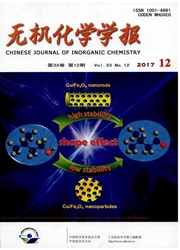

 中文摘要:
中文摘要:
以硫磺素T为母体,合成和表征了一种解聚金属-Aβ聚集体的荧光螯合剂5-氨基-2-(苯并[d]噻唑-2-基)苯酚(FC-9),研究了它与金属-Aβ聚集体的相互作用以及由此导致的Aβ聚集体的构象、形貌和毒性变化。结果表明,FC-9不仅能识别各种Aβ40/Aβ42聚集体,而且还能使金属-Aβ40/42聚集体解聚。FC-9与金属-Aβ聚集体相互作用后,聚集体的形貌由纤维状转化为无定形状,其β-折叠构象也减少了。FC-9还能够跨过细胞膜,符合严格的Lipinski类药标准,在一定程度上可抑制由Cu-Aβ40聚集体产生的毒性,这使得FC-9在螯合治疗老年痴呆症方面可能具有潜在的应用前景。
 英文摘要:
英文摘要:
A thioflavin T-based fluorescent chelator 5-amino-2-(benzo[d]thiazol-2-yl)phenol (FC-9) was synthesized and characterized. Its interaction with metal-Aβ aggregates and the change of morphology, conformation, cytotoxicity of the resulting Aβ aggregates were investigated. The results showed that FC-9 can not only recognize different Aβ40/Aβ42 aggregates but also disaggregate metal-Aβ40/Aβ42 aggregates. After the interaction between FC-9 and metal-Aβ40/Aβ42 aggregates, the morphology of aggregates changed from fibril to amorphousness, and their β-sheet conformation was also reduced. Moreover, the cell membrane penetration of FC- 9 fulfilled common drug-like criteria, and it can inhibit cytotoxicity of the Cu-Aβ40 aggregates, indicating that it could have potential prospect in the treatment of Alzheimer disease. CCDC: 960540.
 同期刊论文项目
同期刊论文项目
 同项目期刊论文
同项目期刊论文
 The effect of a nuclear localization sequence on transfection efficacy of genes delivered by cobalt(
The effect of a nuclear localization sequence on transfection efficacy of genes delivered by cobalt( Formation of a N2-dG:N2-dG Carbinolamine DNA Cross-link by the trans-4-Hydroxynonenal-Derived (6S,8R
Formation of a N2-dG:N2-dG Carbinolamine DNA Cross-link by the trans-4-Hydroxynonenal-Derived (6S,8R 期刊信息
期刊信息
